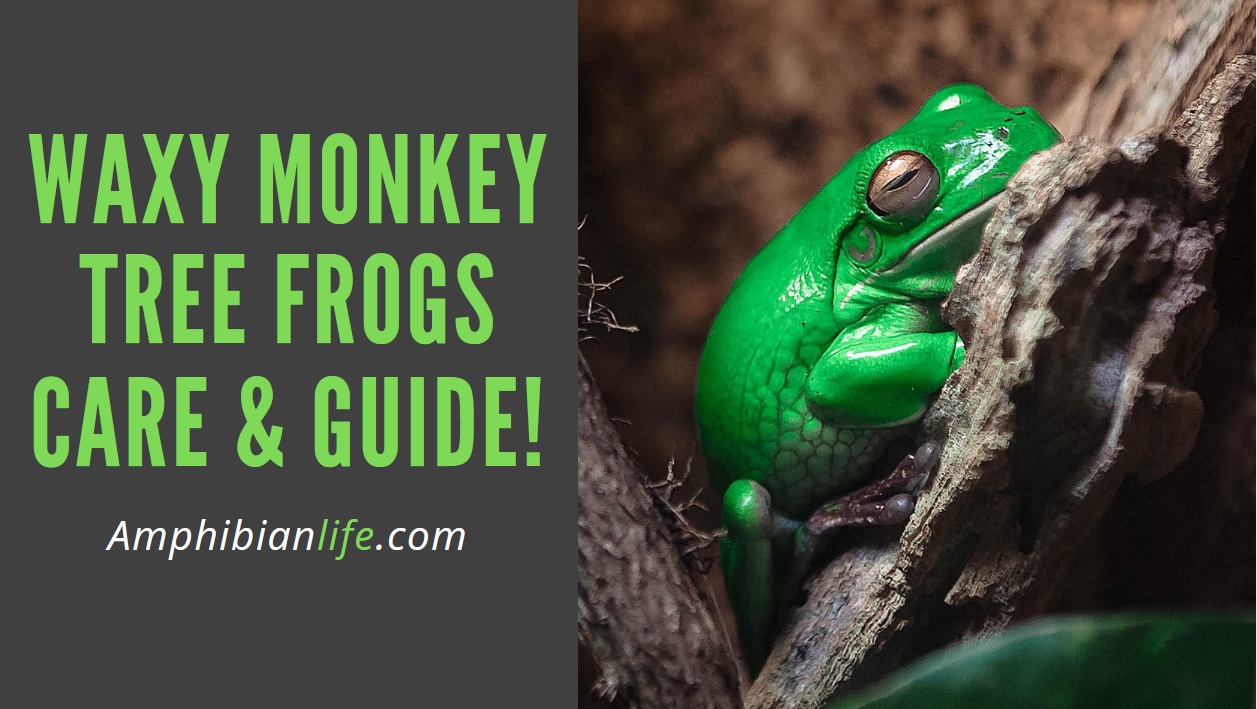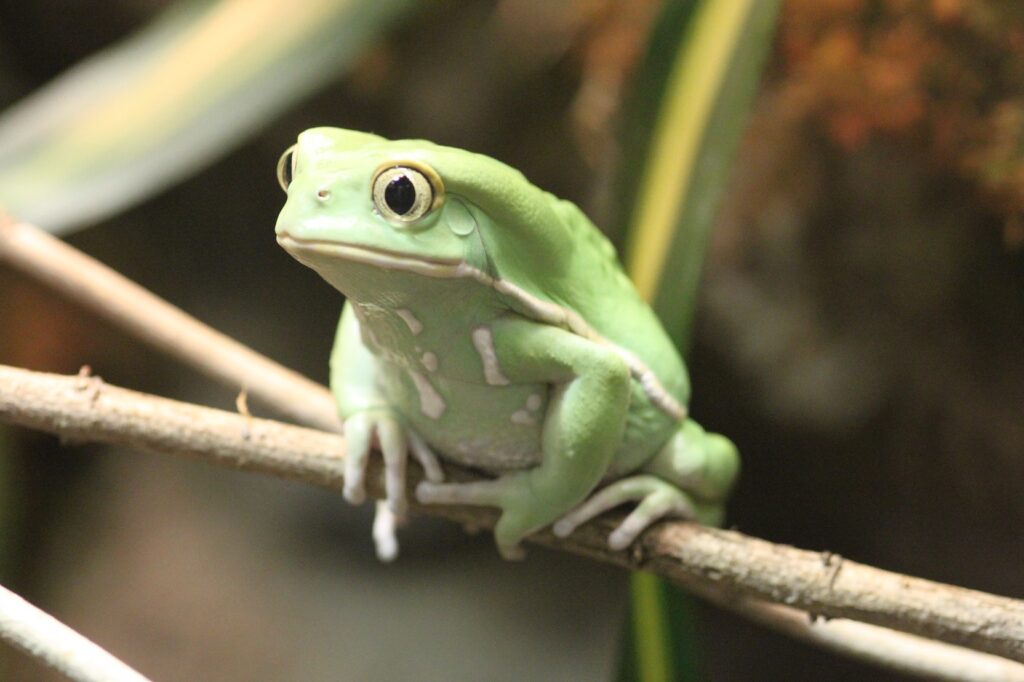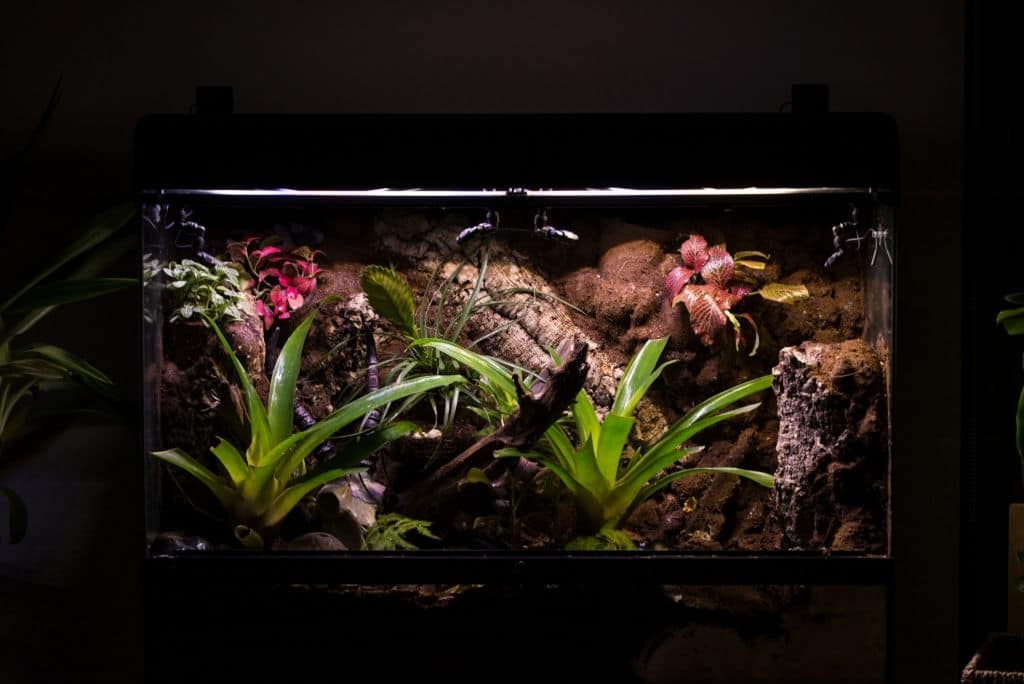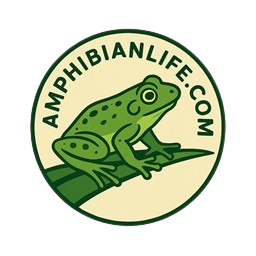
As is quite clear in their name, their skin has a green, waxy substance that gives them this name.
Unlike hopping and jumping around like common frogs, they crawl in trees like a monkey and spend a lifetime there.
Why is it called a monkey frog?
There are 3 Reasons why monkey tree frogs got their name
- Due Presence of Prehensile Hands and Opposable Thumbs
- The monkey tree frog has adapted hands that they use for gripping tree branches, climbing treetops, and crawling.
- They also live on treetops and don’t prefer hopping like other frog species.

What do monkey frogs eat?
monkey tree frogs are insectivorous means an adult monkey can consume a variety of insects
Such as mealworms, waxworms, roaches, and super worms and gut-loaded crickets drink in captivity.
What is Waxy monkey tree frog’s lifespan?
The Average Life Span Of waxy monkey tree frogs is 8 to 10 years with proper care.
Vivarium Design for monkey frogs
Two adults can be kept in a vivarium with dimensions 60x60x90 cm (24x24x36 inches).
Individuals in quarantine and juveniles can be kept in the smaller vivariums.
This species is arboreal and loves to climb so, A small or shallow cage creates stress on the frog. It will spend many hours trying to get out, often scraping its eyes and snout.
A glass vivarium with a full-screen top or half screen/half glass top works well.
You can also use Fullscreen in a climate-controlled room.
These branches should be provided as perches. P. bicolor prefers too thick ones.

Live plants help in maintaining humidity and make the vivarium more “natural.”
Sturdy leafed aroids such as Philodendrons and Monsteras work well.
You can also opt for a layered substrate that works well with this species.
Carbon and gravel underneath, soil (peat, sand, loam) with New Zealand sphagnum is a cherry on top.
Unbleached paper towels and untreated furniture foams are ideal for quarantine tanks.
For Further Reading
- Terrarium, vivarium, paludariums and other Ariums
- What conditions do frogs need for survival in a tank
- 6 most common pet frogs and their setup
Waxy Monkey Tree Frog Care Sheet
Temperature, Lighting, and Humidity for Monkey frogs?
P. bicolor (Phyllobates bicolor) does best in a very warm temperature and often basks.
The best temperature range seems to be 24-32 degrees C (75-90 degrees F).
What humidity do frogs need?
Tropical rain forest frogs such as dart frogs required higher humidity 70-100%+ with minimal ventilation.
However, for Waxy Monkey tree frogs Moderate humidity levels of 60-80% are fine.
Waxy monkey tree frogs should not be kept in a soggy, wet environment.
What kind of light do tree frogs need?
A low-wattage ceramic basking lamp is a good option for a waxy monkey tree frog.
Natural sunlight is beneficial and one of the best and cheapest resources.
Also, you can obtain good results using 60W Chroma Lux bulbs.
Occasional light misting of the plants and substrate help to maintain the humidity level.
Avoid misting the frogs directly as it may cause damage to their skin or choke them.
Clean, filtered water must be provided in a shallow water dish.
We must frequently remove toad feces and frog poops whenever present.
What do monkey frogs eat?
What household food can monkey frogs eat?
Large gut-loaded crickets are available and we can feed them as a food item.
This is a voracious eater, an adult can easily consume 12 large crickets in a feeding.
Feeding 2 or 3 times a week is a good and healthy schedule for waxy frogs.
Other good food items include moths and roaches, Live pink to “crew” mice can be fed.
A smooth-sided plastic or ceramic dish works well as a feeding receptacle.
Some giant monkey frogs prefer hand feeding so, that can also be used sometimes.
Can you hold waxy monkey tree frog?
Waxy monkey frogs are lethargic and inactive during the daytime,
However, most of them do not like being touched, as they are territorial and have their own personality.
Excessive handling can stress them out or make them climb quickly.
Monkey Tree Frog Species Listing.
| Agalychnis Agalychnis annae – Blue-Sided Leaf Frog, Yellow-Eyed Leaf Frog Agalychnis calcarifer – Splendid Leaf Frog Agalychnis callidryas – Red-Eyed Leaf Frog, Red-Eyed Treefrog Agalychnis craspedopus – Fringed Leaf Frog Agalychnis litodryas – Maroon-Eyed Leaf Frog, Pink-Sided Leaf Frog Agalychnis moreletii – Black-Eyed Leaf Frog, Morelet’s Leaf Frog Agalychnis saltator – Misfit Leaf Frog Agalychnis spurrelli – Gliding Leaf Frog Hylomantis Hylomantis aspera Hylomantis granulosa Pachymedusa Pachymedusa dacnicolor – Mexican Leaf Frog Phasmahyla Phasmahyla cochranae Phasmahyla exilis Phasmahyla guttata Phasmahyla jandaia Phrynomedusa Phrynomedusa appendiculata Phrynomedusa bokermanni Phrynomedusa fimbriata Phrynomedusa marginata Phrynomedusa vanzolinii Phyllomedusa Phyllomedusa atelopoides Phyllomedusa ayeaye Phyllomedusa baltea Phyllomedusa bicolor – Giant Monkey Frog Phyllomedusa boliviana Phyllomedusa buckleyi Phyllomedusa burmeisteri – Burmeister’s Monkey frog Phyllomedusa centralis Phyllomedusa coelestis Phyllomedusa danieli Phyllomedusa distincta Phyllomedusa duellmani Phyllomedusa ecuatoriana It is endemic to Ecuador and the Amazonian slopes of the Andes Phyllomedusa hulli Amazonian region of northeastern Peru; possibly in nearby Ecuador Phyllomedusa hypochondrialis hypochondrialis – Northern Orange-Legged Leaf Frog Phyllomedusa hypochondrialis azureum – Southern Orange-Legged Leaf Frog Phyllomedusa iheringii found in Brazil and Uruguay Phyllomedusa lemur – Slender Leaf Frog, Lemur’s Monkey frog Phyllomedusa medinai It is endemic to Venezuela Phyllomedusa palliata It is found in Bolivia, Brazil, Ecuador, Peru, and possibly Colombia Phyllomedusa perinesos It is found on the Amazonian slopes of the Andes in Colombia Phyllomedusa psilopygion It is found in southern Colombia and north-western Ecuador Phyllomedusa rohdei– Rohde’s leaf frog- The species is endemic to south-eastern Brazil Phyllomedusa sauvagii – Waxy Monkey Leaf Frog, Painted-Bellied Leaf Frog Phyllomedusa tarsius – Tarsier Leaf Frog Phyllomedusa tetraploidea Phyllomedusa tomopterna – Tiger-Striped Leaf Frog, Barred Leaf Frog Phyllomedusa trinitatis – It is found in Trinidad and Tobago and Venezuela Phyllomedusa vaillantii – The white-lined leaf frog (It is found in northern South America) Phyllomedusa venusta – found in Colombia and Panama | |
Yes, Monkey frogs have a special protective ability to produce a waxy poisonous substance that resides over their skin.
The waxy substance has a bad taste, so it distracts predators and saves the frog from life-threatening situations.
Mostly all amphibians carry harmful bacteria like salmonella, virus, and parasites.
Tree Frogs have toxins on their skin that need careful handling.
ingesting them causes vomiting and stomach ache but no life-threatening cases.
Some tree frogs can exist together, such as gray tree frogs (Hyla Versicolor) and green tree frogs (Hyla cinerea)
both these species have similar dietary and care requirements and we can keep them alongside each other.
